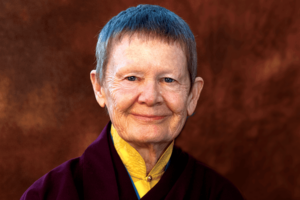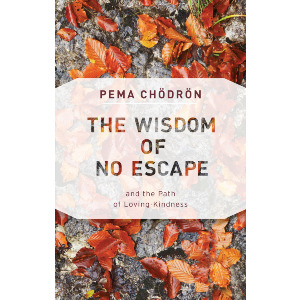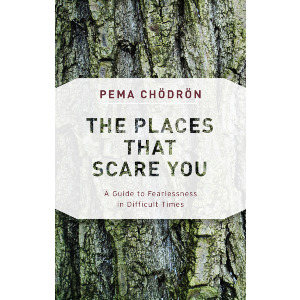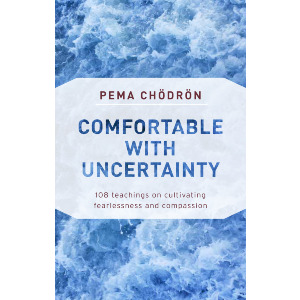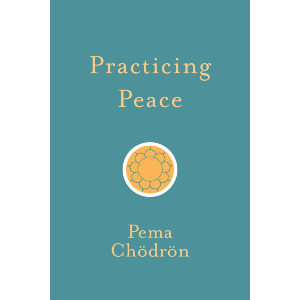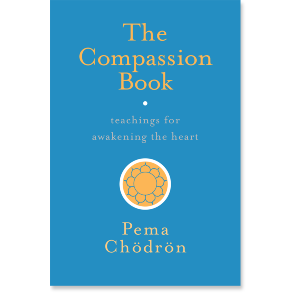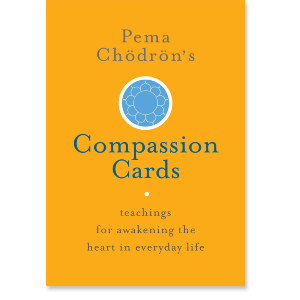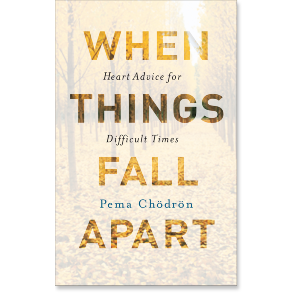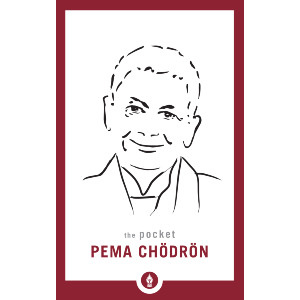The Teachings of the Buddha
Traditionally, there are two ways of describing the teachings of the Buddha: the dharma that is taught and the dharma that is experienced. The dharma that is taught has been presented continuously in books and lectures in a pure and fresh way since the time of the Buddha. Even though it all began in India, in a very different kind of time and space and culture than we know today, the essence of the teachings was capable of transmission to Southeast Asia, Japan, China, Korea, Vietnam, and Tibet—to all the places to which Buddhism has spread—by people who could express what they themselves had been taught. Nowadays there are so many wonderful books on the basic teachings; you can read Joseph Goldstein and Ayya Khema and Suzuki Roshi and Chögyam Trungpa and Tarthang Tülku and all the translations of Herbert Guenther. There are so many different ways you can read and hear the teachings, and they all have slightly different flavors. But you will find that if in each one you choose a theme, like the four noble truths or loneliness or compassion, they all say the same thing about it, according to their own style or culture. The teachings are the same and the essence is the same.
Traditionally it is said that the dharma can be taught, but one has to have ears to hear it.
The dharma that is taught is like a jewel, a precious jewel. Like bodhicitta, it can be covered over by dirt and yet is unchanged by dirt. When someone brings the jewel out into the light and shows it to everyone, it resonates in the hearts and minds of those who see it. The teachings are also like a beautiful golden bell hidden away in a deep, dark cave; when someone brings it out and rings it, people can hear the sound. That’s the dharma that is taught. Traditionally it is said that the dharma can be taught, but one has to have ears to hear it. The analogy of three pots is given. If you’re like a pot with a big hole in the bottom, then when the dharma is put in, it just goes right out. If you’re like a pot that has poison in it, when the dharma is put in, it gets reinterpreted and comes out as poison. In other words, if you’re full of resentment and bitterness, you might reinterpret it to suit your own bitterness and resentment. If the pot is turned upside down, nothing can be put into the pot. You have to be awake and open to hear the dharma that is taught.
The dharma that is experienced is not a different dharma, although sometimes it feels quite different. A common experience is that when you hear the teachings, they resonate in your heart and mind, and you feel inspired by them, but you can’t figure out what they have to do with your everyday life. When push comes to shove and you lose your job or the person you love leaves you or something else happens and your emotions go crazy and wild, you can’t quite figure out what that has to do with the four noble truths. Your pain feels so intense that the four noble truths seem somewhat pitiful by comparison. Trungpa Rinpoche once said that the dharma has to be experienced because when the real quality of our lives, including the obstacles and problems and experiences that cause us to start questioning, becomes intense, any mere philosophical belief isn’t going to hold a candle to the reality of what we are experiencing.
What you will discover as you continue to study the dharma and to practice meditation is that nothing that you have ever heard is separate from your life. Dharma is the study of what is, and the only way you can find out what is true is through studying yourself. The Zen master Dogen said, “To know yourself or study yourself is to forget yourself, and if you forget yourself then you become enlightened by all things.” Knowing yourself or studying yourself just means that it’s your experience of joy, it’s your experience of pain, your experience of relief and ventilation, and your experience of sorrow. That’s all we have and that’s all we need in order to have a living experience of the dharma—to realize that the dharma and our lives are the same thing.
Dharma is the study of what is, and the only way you can find out what is true is through studying yourself.
Acceptance and Openness
I’m so struck by the quotation that appeared on the bulletin board yesterday. It said, “The everyday practice is simply to develop complete acceptance and openness to all situations, emotions, and people.” You read that and you hear it and maybe I even talk about it, but basically, what does that mean? When you read it, you think you sort of know what it means, but when you begin to try to do that, to test it against your experience, then your preconceptions of what it means completely fall apart; you discover something fresh and new that you never realized before. What personal identification with the dharma means is, live that way, test it, try to find out what it really means in terms of losing your job, being jilted by your lover, dying of cancer. “Be open and accept all situations and people.” How do you do that? Maybe that’s the worst advice anybody could give you, but you have to find out for yourself.
Often we hear the teachings so subjectively that we think we’re being told what is true and what is false. But the dharma never tells you what is true or what is false. It just encourages you to find out for yourself. However, because we have to use words, we make statements. For example, we say, “The everyday practice is simply to develop complete acceptance of all situations, emotions, and people.” That sounds like that’s what’s true and not to do that would be false. But that’s not what it says. What it does say is to encourage you to find out for yourself what is true and what is false. Try to live that way and see what happens. You’ll come up against all your doubts and fears and your hopes and you’ll grapple with that. When you start to live that way, with that sense of “What does this really mean?,” you’ll find it quite interesting. After a while, you forget that you’re even asking the question; you just practice meditation or you just live your life, and you have what is traditionally called insight, which means that you have a fresh take on what is true. Insight comes suddenly, as though you’ve been wandering around in the dark and someone switches on all the lights and reveals a palace. You say, “Wow! It’s always been here.” Yet insight is very simple; it isn’t always “Wow!” It’s as if all your life there’s been this bowl of white stuff sitting on your table but you don’t know what it is. You’re sort of scared to find out. Maybe it’s LSD, or cocaine, or rat poison. One day you moisten your finger, you touch it and get a few little grains, and you taste it, and my goodness, it’s salt. Nobody can tell you otherwise—it’s so obvious, so simple, so clear. So we all have insights. In our meditation we have them and perhaps we share them. I suppose that’s what all these talks are, sharing insights. It feels as if we’ve discovered something that no one else ever knew, and yet it’s completely straightforward and simple.
The Path of a Question
You can never deny the dharma that is experienced because it’s so straightforward and true. But traveling the path between the dharma that is taught and the dharma that is experienced involves allowing yourself and encouraging yourself not to always believe what you’re taught, but to wonder about it. All you have to do is to live that way and it will become your path. The quotation on the bulletin board goes on to say that the way to do this is to stay open and never to withdraw. Never centralize into yourself. These are not just sweet little aphorisms, but actually the most profound teachings put in a deceptively simple way. You might think, “Oh, yes, never withdraw, fine, but what does that mean?” Obviously, it doesn’t mean that you’re a bad person to withdraw; you’ve been taught about maitri and loving-kindness and nonjudgmental attitude and acceptance of yourself, not being afraid to be who you are. Do you see what I mean? In Zen Mind, Beginner’s Mind Suzuki Roshi says that he got a letter from one of his students that said, “Dear Roshi, you sent me a calendar and each month has a very inspiring statement, but I’m not even into February yet and I find that I can’t measure up to these statements.” Suzuki Roshi was laughing at the fact that people use the dharma to make themselves feel miserable. Or other people who have a quick conceptual grasp of the dharma may use it to become arrogant and proud. If you find yourself misunderstanding the teachings, the teachings themselves will always show you where you’re off. In some sense, the dharma is like a seamless web that you can’t get out of.
If you find yourself misunderstanding the teachings, the teachings themselves will always show you where you’re off.
The dharma should really be taken to heart, not just used as a way to get cozy and secure or to continue your habitual pattern of self-denigration or your habitual pattern of striving for perfection. Initially you may find that you use the dharma as you’ve always used everything else, but then, because it’s the dharma, it might occur to you that you’re using it to denigrate yourself or to become a perfectionist—“Oh, my goodness! I’m using this to make the world into love and light or to make it a resentful, harsh place.”
Experiential Learning
Trungpa Rinpoche told us that like most tülkus,* he was brought up extremely strictly. He was hit when he did things that weren’t considered proper for a tülku to do, and he had to study very hard. He said he was a difficult boy and so he was punished a lot, but he was also smart and was quite proud of himself. His tutors never praised him; they always scolded him and told him he should work harder. Nevertheless, he could tell they were quite impressed with his brilliance. When it came time for him to start visiting his guru, Jamgon Kongtrul of Sechen, to review his studies, he couldn’t wait to display his knowledge and intelligence. It was early morning and the light was shining through the window onto Jamgon Kongtrul’s face. Rinpoche sat down next to him. Jamgon Kongtrul was very quiet for a while, and finally he said, “Well, tell me what you know about all the six paramitas,” † and Rinpoche confidently rattled it all off with all the references and all the different things that different teachers had said. When it was all finished, Jamgon Kongtrul was quiet again, and then he said, “But what do you feel about all that?” Startled, Rinpoche said, “What does it matter what I feel about it? This is the way it’s always been taught and it’s been taught this way since it was first presented and this is how it is.” Jamgon Kongtrul said, “It’s all very well to know it intellectually, but how do you feel about it? What is your experience of this?” Rinpoche said that was how Jamgon Kongtrul always taught him. He always wanted to know what his experience of generosity or of discipline was, and so on. That was what Jamgon Kongtrul nurtured and cultivated in him.
In terms of the dharma that is taught, Trungpa Rinpoche heard it very well and very clearly. His own life had a tremendous amount of learning in it, and he always wanted us to learn and study as well. But he cared most that one should find the true meaning and not just accept another person’s view without questioning it. When Rinpoche talked about the precepts, for example, he said it’s all very well, you could know all two hundred and fifty or three hundred precepts by heart and all the references, but the crucial point was to get the true meaning of the precepts. For instance, you might know that the first precept is not to kill, and you may know all the stories of how that precept came into being, and you may know the logic of how killing increases ego-fixation and how working with the precepts cuts the chain of cause and effect—you may know all that, but the question really is, when the desire to kill something arises, why is it that you want to kill something? What’s really going on there? And what would the benefit be of refraining from killing? What does refraining do? How do you feel when you refrain? What does it teach you? That’s the way Rinpoche was trained, and that’s the way he trained us.
The dharma that is taught and the dharma that is experienced are descriptions of how to live, how to use your life to wake you up rather than put you to sleep. And if you choose to spend the rest of your life trying to find out what awake means and what asleep means, I think you might attain enlightenment.
* A tülku is the incarnation of a previous enlightened teacher, manifesting the
spiritual qualities of that teacher.
† The six paramitas, or “perfections,” are generosity, discipline, patience, exertion,
meditation, and knowledge.
Related Books
$16.95 - Paperback
$16.95 - Paperback
$17.95 - Paperback
$12.95 - Paperback
$12.95 - Paperback
$17.95 - Paperback
Pema Chödrön's Compassion Cards
$16.95 - MixedMedia
$18.95 - Paperback
$12.95 - Paperback
